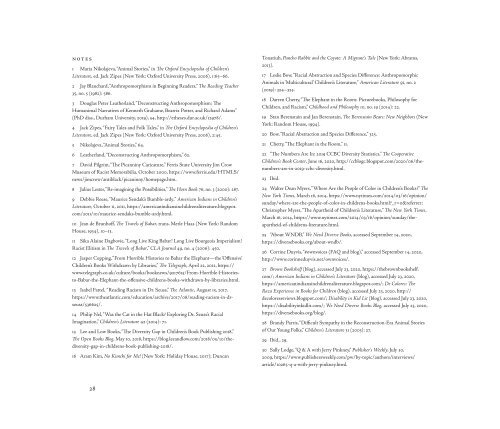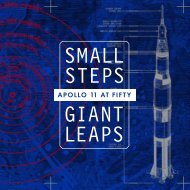Animals Are Us: Anthropomorphism in Children’s Literature; Celebrating the Peter J. Solomon Collection
Why do we tell stories to children through and about animals? Are there reasons why we shouldn’t? Animals Are Us invites explores these questions and more through influential historic examples of anthropomorphism in dialogue with contemporary books drawn from the collection of Peter J. Solomon (Harvard College Class of 1960, MBA 1963) and the holdings of Houghton Library. The exhibition invites you to engage critically with animal anthropomorphism, and delight in the artfulness of this enduring literary genre. Catalog of an exhibition on view at Houghton Library, Harvard University, September 1, 2021 - January 7, 2022.
Why do we tell stories to children through and about animals? Are there reasons why we shouldn’t? Animals Are Us invites explores these questions and more through influential historic examples of anthropomorphism in dialogue with contemporary books drawn from the collection of Peter J. Solomon (Harvard College Class of 1960, MBA 1963) and the holdings of Houghton Library. The exhibition invites you to engage critically with animal anthropomorphism, and delight in the artfulness of this enduring literary genre.
Catalog of an exhibition on view at Houghton Library, Harvard University, September 1, 2021 - January 7, 2022.
You also want an ePaper? Increase the reach of your titles
YUMPU automatically turns print PDFs into web optimized ePapers that Google loves.
notes<br />
1 Maria Nikolajeva, “Animal Stories,” <strong>in</strong> The Oxford Encyclopedia of <strong>Children’s</strong><br />
<strong>Literature</strong>, ed. Jack Zipes (New York: Oxford University Press, 2006), 1:65–66.<br />
2 Jay Blanchard, “<strong>Anthropomorphism</strong> <strong>in</strong> Beg<strong>in</strong>n<strong>in</strong>g Readers,” The Read<strong>in</strong>g Teacher<br />
35, no. 5 (1982): 586.<br />
3 Douglas <strong>Peter</strong> Lea<strong>the</strong>rland, “Deconstruct<strong>in</strong>g <strong>Anthropomorphism</strong>: The<br />
Humanimal Narratives of Kenneth Grahame, Beatrix Potter, and Richard Adams”<br />
(PhD diss., Durham University, 2019), 54, http://e<strong>the</strong>ses.dur.ac.uk/12978/.<br />
4 Jack Zipes, “Fairy Tales and Folk Tales,” <strong>in</strong> The Oxford Encyclopedia of <strong>Children’s</strong><br />
<strong>Literature</strong>, ed. Jack Zipes (New York: Oxford University Press, 2006), 2:45.<br />
5 Nikolajeva, “Animal Stories,” 64.<br />
6 Lea<strong>the</strong>rland, “Deconstruct<strong>in</strong>g <strong>Anthropomorphism</strong>,” 62.<br />
7 David Pilgrim, “The Picann<strong>in</strong>y Caricature,” Ferris State University Jim Crow<br />
Museum of Racist Memorabilia, October 2000, https://www.ferris.edu/HTMLS/<br />
news/jimcrow/antiblack/pican<strong>in</strong>ny/homepage.htm.<br />
8 Julius Lester, “Re-imag<strong>in</strong><strong>in</strong>g <strong>the</strong> Possibilities,” The Horn Book 76, no. 3 (2000): 287.<br />
9 Debbie Reese, “Maurice Sendak’s Bumble-ardy,” American Indians <strong>in</strong> <strong>Children’s</strong><br />
<strong>Literature</strong>, October 11, 2011, https://american<strong>in</strong>dians<strong>in</strong>childrensliterature.blogspot.<br />
com/2011/10/maurice-sendaks-bumble-ardy.html.<br />
10 Jean de Brunhoff, The Travels of Babar, trans. Merle Haas (New York: Random<br />
House, 1934), 10–13.<br />
11 Sika Ala<strong>in</strong>e Dagbovie, “Long Live K<strong>in</strong>g Babar! Long Live Bourgeois Imperialism!<br />
Racist Elitism <strong>in</strong> The Travels of Babar,” CLA Journal 49, no. 4 (2006): 450.<br />
12 Jasper Copp<strong>in</strong>g, “From Horrible Histories to Babar <strong>the</strong> Elephant—<strong>the</strong> ‘Offensive’<br />
<strong>Children’s</strong> Books Withdrawn by Libraries,” The Telegraph, April 22, 2012, https://<br />
www.telegraph.co.uk/culture/books/booknews/9217615/From-Horrible-Historiesto-Babar-<strong>the</strong>-Elephant-<strong>the</strong>-offensive-childrens-books-withdrawn-by-libraries.html.<br />
13 Isabel Fattel, “Read<strong>in</strong>g Racism <strong>in</strong> Dr. Seuss,” The Atlantic, August 15, 2017,<br />
https://www.<strong>the</strong>atlantic.com/education/archive/2017/08/read<strong>in</strong>g-racism-<strong>in</strong>-drseuss/536625/.<br />
14 Philip Nel, “Was <strong>the</strong> Cat <strong>in</strong> <strong>the</strong> Hat Black? Explor<strong>in</strong>g Dr. Seuss’s Racial<br />
Imag<strong>in</strong>ation,” <strong>Children’s</strong> <strong>Literature</strong> 42 (2014): 71.<br />
15 Lee and Low Books, “The Diversity Gap <strong>in</strong> <strong>Children’s</strong> Book Publish<strong>in</strong>g 2018,”<br />
The Open Books Blog, May 10, 2018, https://blog.leeandlow.com/2018/05/10/<strong>the</strong>diversity-gap-<strong>in</strong>-childrens-book-publish<strong>in</strong>g-2018/.<br />
16 Aram Kim, No Kimchi for Me! (New York: Holiday House, 2017); Duncan<br />
Tonatiuh, Pancho Rabbit and <strong>the</strong> Coyote: A Migrant’s Tale (New York: Abrams,<br />
2013).<br />
17 Leslie Bow, “Racial Abstraction and Species Difference: Anthropomorphic<br />
<strong>Animals</strong> <strong>in</strong> ‘Multicultural’ <strong>Children’s</strong> <strong>Literature</strong>,” American <strong>Literature</strong> 91, no. 2<br />
(2019): 324–325.<br />
18 Darren Chetty, “The Elephant <strong>in</strong> <strong>the</strong> Room: Picturebooks, Philosophy for<br />
Children, and Racism,” Childhood and Philosophy 10, no. 19 (2014): 22.<br />
19 Stan Berensta<strong>in</strong> and Jan Berensta<strong>in</strong>, The Berensta<strong>in</strong> Bears: New Neighbors (New<br />
York: Random House, 1994).<br />
20 Bow, “Racial Abstraction and Species Difference,” 325.<br />
21 Chetty, “The Elephant <strong>in</strong> <strong>the</strong> Room,” 11.<br />
22 “The Numbers <strong>Are</strong> In: 2019 CCBC Diversity Statistics,” The Cooperative<br />
<strong>Children’s</strong> Book Center, June 16, 2020, http://ccblogc.blogspot.com/2020/06/<strong>the</strong>numbers-are-<strong>in</strong>-2019-ccbc-diversity.html.<br />
23 Ibid.<br />
24 Walter Dean Myers, “Where <strong>Are</strong> <strong>the</strong> People of Color <strong>in</strong> <strong>Children’s</strong> Books?” The<br />
New York Times, March 16, 2014, https://www.nytimes.com/2014/03/16/op<strong>in</strong>ion/<br />
sunday/where-are-<strong>the</strong>-people-of-color-<strong>in</strong>-childrens-books.html?_r=0&referrer;<br />
Christopher Myers, “The Apar<strong>the</strong>id of <strong>Children’s</strong> <strong>Literature</strong>,” The New York Times,<br />
March 16, 2014, https://www.nytimes.com/2014/03/16/op<strong>in</strong>ion/sunday/<strong>the</strong>apar<strong>the</strong>id-of-childrens-literature.html.<br />
25 “About WNDB,” We Need Diverse Books, accessed September 14, 2020,<br />
https://diversebooks.org/about-wndb/.<br />
26 Corr<strong>in</strong>e Duyvis, “#ownvoices (FAQ and blog),” accessed September 14, 2020,<br />
http://www.cor<strong>in</strong>neduyvis.net/ownvoices/.<br />
27 Brown Bookshelf (blog), accessed July 23, 2020, https://<strong>the</strong>brownbookshelf.<br />
com/; American Indians <strong>in</strong> <strong>Children’s</strong> <strong>Literature</strong> (blog), accessed July 23, 2020,<br />
https://american<strong>in</strong>dians<strong>in</strong>childrensliterature.blogspot.com/; De Colores: The<br />
Raza Experience <strong>in</strong> Books for Children (blog), accessed July 23, 2020, http://<br />
decoloresreviews.blogspot.com/; Disability <strong>in</strong> Kid Lit (blog), accessed July 23, 2020,<br />
https://disability<strong>in</strong>kidlit.com/; We Need Diverse Books Blog, accessed July 23, 2020,<br />
https://diversebooks.org/blog/.<br />
28 Brandy Parris, “Difficult Sympathy <strong>in</strong> <strong>the</strong> Reconstruction-Era Animal Stories<br />
of Our Young Folks,” <strong>Children’s</strong> <strong>Literature</strong> 31 (2003): 27.<br />
29 Ibid., 29.<br />
30 Sally Lodge, “Q & A with Jerry P<strong>in</strong>kney,” Publisher’s Weekly, July 30,<br />
2009, https://www.publishersweekly.com/pw/by-topic/authors/<strong>in</strong>terviews/<br />
article/10265-q-a-with-jerry-p<strong>in</strong>kney.html.<br />
28



